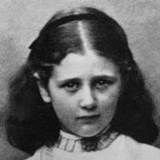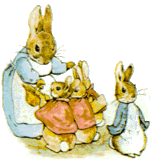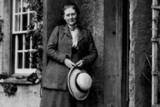One Of The First Self Published Authors- Can You Guess Who?
“There is something delicious about writing the first words of a story. You never quite know where they’ll take you.” – Beatrix Potter
Would you consider yourself a successful author if you had currently sold over 100 million copies of your books? How about if, after 112 years you are still considered one of the best loved and bestselling authors? Would it help if you learned that you also had your work translated in more than 35 languages?
If you screamed “YES!” to any of these questions, then there is absolutely no debate that Beatrix Potter was an extraordinary author and is still having a fabulous career! Interesting to note is that she only wrote 28 books and they’re typically around 4 inches high.
Let’s start at the beginning. Helen Beatrix Potter was born in 1866 in Kensington. Her parents, living off inheritance, pursued an active social life with artists, writers and politicians. Her father spent much of his time immersed in his love of art and photography. Even her extended family included many artists and her grandfather co-founded the Manchester School of Design. However, Helen spent little time with her parents and had a typically restricted childhood of Victorian England.
She was educated in the home by a governess, but her family was quick to notice her artistic abilities and ordered private art lessons for her. By the age of eight, she filled numerous sketchbooks with her drawings. Her book learning was supplemented by many outings to galleries and museums, other than that, she was left to her own devices.
The family, which now included her brother, Bertram, spent a lot of time in the countryside. She and Bertram had a menagerie of small animals that they took care of and lived in their schoolroom. Unfortunately, Bertram was sent away to school so she spent much of her adolescence in solitude which allowed her to hone her studies of the natural world around her. Formal education was largely ignored and as many wealthy young ladies, she was appointed the role of “household supervisor”.
In her 20s Beatrix became a talented naturalist and made in depth studies of fungi. Her uncle presented a paper for her to the Linnean Society as females weren’t allowed to do so. Her efforts weren’t taken seriously so she focused more on her paintings and drawings. She earned income from a greetings card company which led to many other illustration jobs. She also began writing letters to the children of her former governess, Annie Moore. These letters birthed the well loved creatures such as Peter Rabbit.
Seven years later, she asked to borrow the letters back and she shopped around the idea of Peter Rabbit. Six publishers turned her down so in 1901, she published 250 copies on her own. (One of these is for sale and you can own it for $1,121,126… and you still have to pay $21.93 for shipping!)
The Warne’s picked it up and had to do six editions in a year to keep up with the demand. This business deal also brought love. Norman Warne proposed in 1905, her parents opposed the marriage since he was “in trade” and beneath her station. She defied then, got engaged and tragically he died a month later from pernicious anemia (some say a virulent form of leukemia). Heartbroken she continued with their plans to buy Hill Top Farm in the Lake District but wasn’t able to live there full time as she was expected to take care of her parents in London. Beatrix Potter continued to write one or two “little books” a year and bought another farm near Hill Top.
She met a local solicitor who befriended her and offered her marriage. William Heelis became her husband after stringent objections by her parents because he was nothing but a “country solicitor”. This finally freed her to live in the country full time and have the life that she yearned for. She and William continued to buy land in the Lake District and she became known as an astute sheep breeder. This business acumen also led her to creating merchandising items that accompanied her books. Stuffed animals, plates etc. increased her sizable fortune many times over.
Towards the end of her life, she was passionate about the conservation of her beloved countryside and willed over 4000 acres to a trust which keeps the Lake District preserved today. Her keen eye and talent for observation has made her one of the most cherished children’s author of all time. We are a much richer people for reading the tales of silly rabbits and clueless ducks named Jemima.





